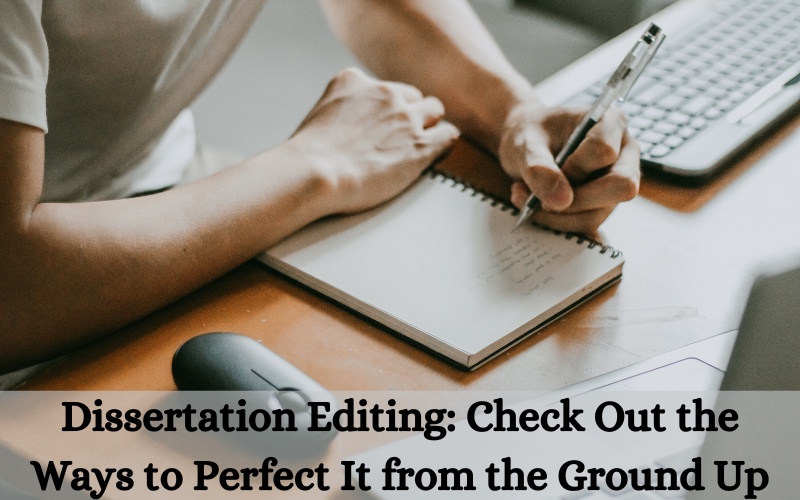Are you done with the writing part of your dissertation? Are you struggling with the editing part? If yes, do not worry; it is the right place to be. Although numerous dissertation editing services are available on the market, what is the harm in doing it yourself? So have a look at what you must consider:
Types of Editing to Make Dissertations Effective
Tables
Editing a table is a crucial thing to do while working on a dissertation. As most of the time, readers get the information through the tables and images more than the whole content. So, you must ensure that you include all the facts and figures in the table correctly. In addition, recheck this data again while editing the document. Besides this, you have to check the data and the statistics to ensure they are relevant and flowing with the content.
Citations
Citing is another important thing to check in your dissertation. As your document will have various references, you will face the consequences if you do not cite them. It is so because, without citation, your content will be considered plagiarised. In addition, it will harm your status, as copying someone else's work and presenting it under your name is an offense. So, ensure that you have cited the sources properly and followed the guidelines specified by your professor.
Indexing
Using specialized indexing software, while editing, you must go through a piece of content and compile an index of names, locations, or other significant data. This is helpful for businesses that want quick access to information on a certain subject or file. This form of editing differs slightly from citation creation. It is the challenging reason for which students have to seek help from editing and proofreading services.
Formatting
The format is another crucial element you must consider while editing your dissertation. If the format is not appropriate, the readers will not be able to understand the context. On the other hand, if you do not follow the defined format laid out by the professor, you cannot score well. As such, there are guidelines formed that include font, size, line spacing, and more while evaluating a particular piece.
Proofreading
Proofreading is the most easy type of editing. In this case, a proofreader must look over the work and fix grammar, punctuation, capitalization, spelling, and word use issues. In this case, you have to proofread to ensure that your content writing at least meets all of the basic eye tests, so readers are not immediately put off by blatant spelling and grammar errors.
Developmental
Developmental editing, sometimes referred to as "substantive editing," is one of the labour-intensive processes. In this case, you have to review the text to make organizational and structural modifications. Characterization and storyline may undergo significant modifications when writing fiction. Substantive editing is required when you want someone to carefully review your work and offer suggestions for improvement.
Structural
Developmental and substantive editing are both similar to structural editing. This kind of editing looks at the organization of a piece of writing, including the plot and content flow. Copy-editing and style editing are both included in structural editing. It is one of the more thorough types of editing and is particularly helpful when writing novels or essays to submit to journals or for peer review.
How to Edit a Dissertation Perfectly
Be Concise
Although writing a novel gives you the freedom to use more words, writing a dissertation has a limit. So, being concise is the only option to make your work appropriate and increase its readability. While editing your document, you should check for the extra words and phrases used and replace them with concise ones. Doing this will keep you within the word limit provided.
Read Out Loud
Reading the text out loud is the best tip to follow while editing a document. It is so because it helps to catch silly grammatical mistakes and awkward sentences. In addition, it helps to get a feel for the continuous flow and the tone of the content. It also has benefits as when you read, your ears can get mistakes more than your eyes.
Take a Break
Taking a break between writing and editing a document is a must; otherwise, you cannot work with full efficiency. It is advised to leave the work for a few hours before editing it because, by doing this, you will have fresh set of eyes and an active mind. In addition, it will help you be more attentive and find mistakes more accurately.
Avoiding Slang
Slang is a word used frequently on social media platforms, but in formal documents like dissertations, you have to use only formal language. So while editing your document, you must make sure that you have not used it. If you use these, your professor might reject the whole document, and all your hard work will go in vain. So to make sure that you have not used them, you can seek help from editing and proofreading services.
SEO Retouching
One of the final steps in editing and proofreading is search engine optimization. When you create content that is helpful, enlightening or entertaining for your target audience, you want readers to be able to find it on search engines. Therefore, you must ensure that their header tags are appropriate and that they use the same keywords and phrases as their intended audience. Creating the title, URL slug, and metadata at this time is also a good idea because these elements contain words and phrases that your target readers is most likely to search for.
Avoid Inconsistency
The way a writer refers to someone or something may not be important to readers, but they will notice if the writer is unsure of how to refer to someone or something. Always ensure that a writer has a single point of view and maintains it across all of the supporting details.
Do Not Use Excessive Pronouns
The meanings are not always clear when writers start mixing and matching pronouns, at least on paper. Editors must be extremely careful to determine to whom or what a pronoun refers and to provide clarification as needed. It is preferable to repeat a name twice in a line than to leave the reader wondering who is who.
Conclusion
So this was all you needed to know about editing your dissertation. This write-up has discussed all the types of editing that you must check while editing the document. In addition, it has techniques you cannot avoid while proofreading the content. Even after these, if you have faced challenges, do not hesitate to seek help from professional dissertation editing services.


No comments yet